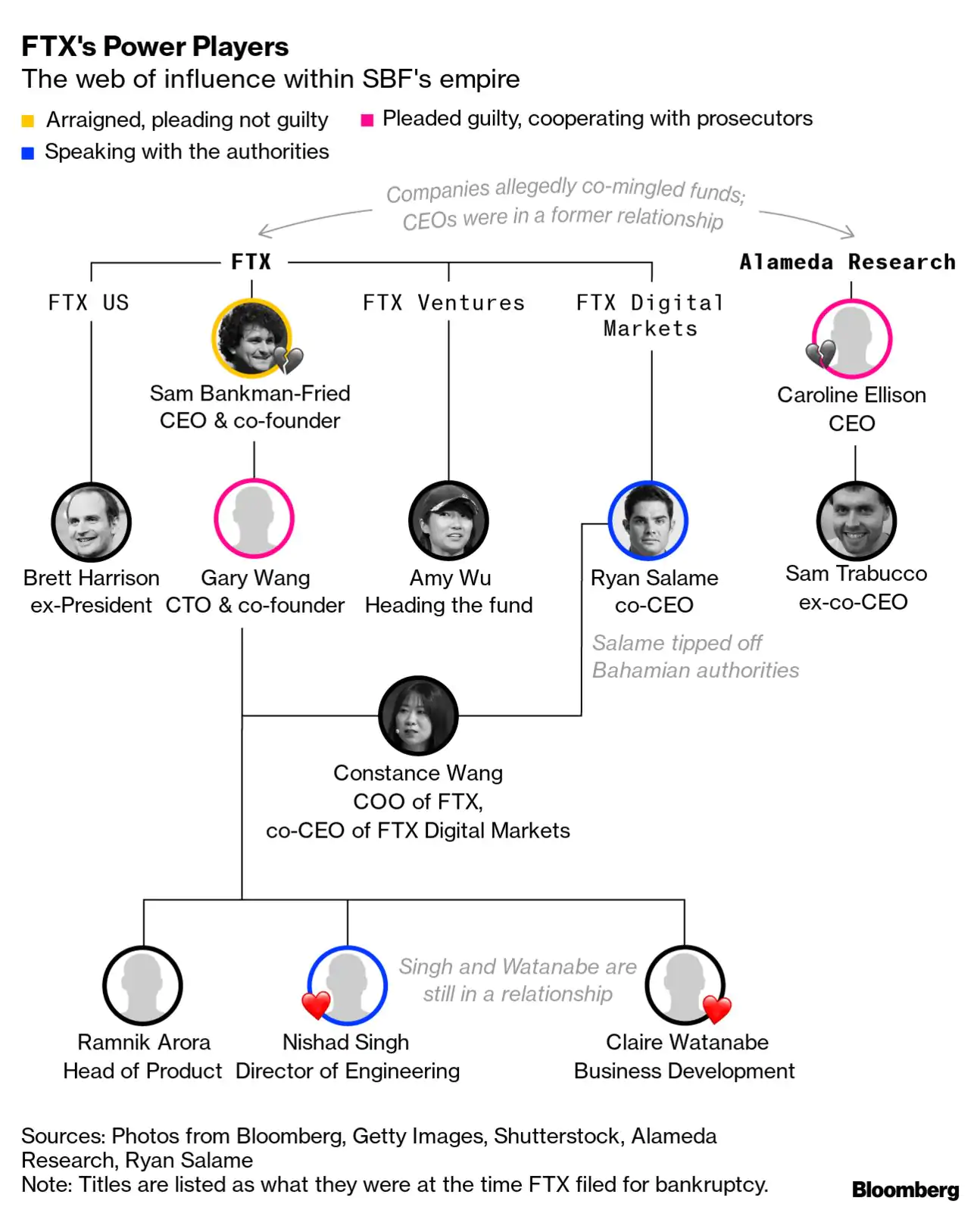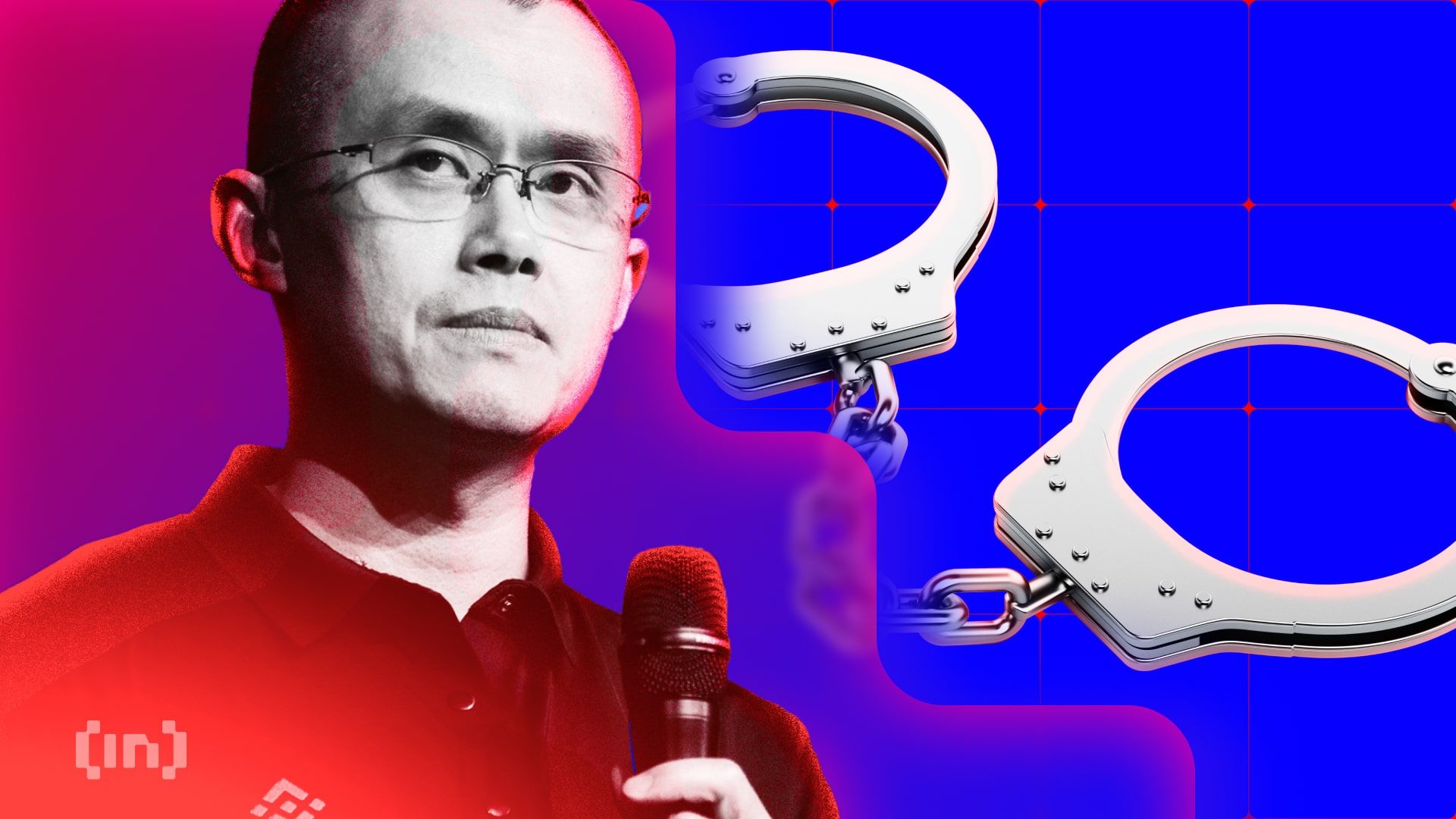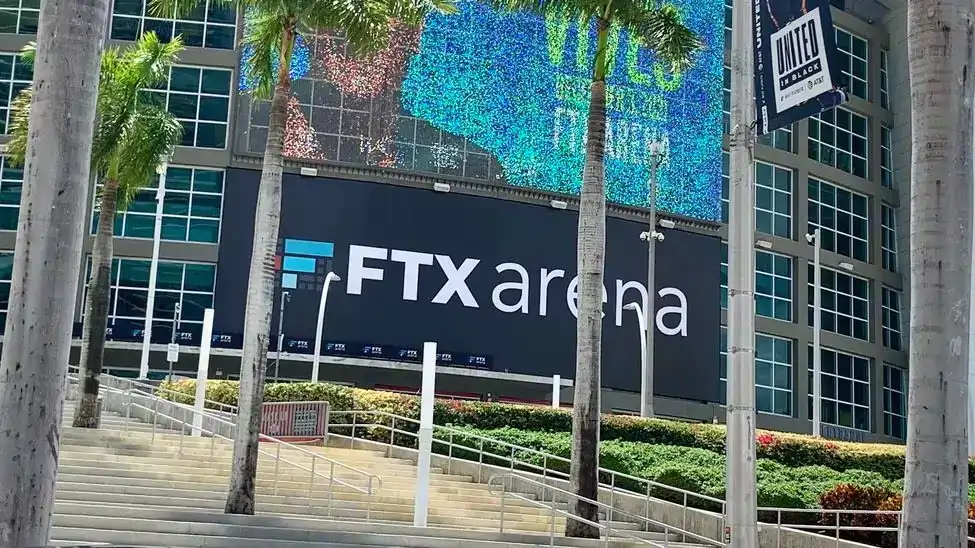A select group of key executives within the top tiers of the now-defunct crypto empire wielded expansive influence in making crucial decisions. Here they are.
Hannah Miller
Chris Dolmetsch
Raeedah Wahid
Sam Bankman-Fried may be the face of FTX’s failure, but he wasn’t the only one keeping his sprawling empire going.
The more than 130 entities that made up the FTX Group ranged from crypto exchanges to a venture arm to a videogame company, according to bankruptcy filings. But control over these businesses was restricted to a powerful few who led the company’s deal-making and made crucial decisions about how FTX spent its once-vast supply of cash.
It’s not clear all of them will be of interest to prosecutors. The fraud case against Bankman-Fried is mainly focused on the transfer of billions of dollars from FTX customer accounts to affiliated hedge fund Alameda Research, which accumulated trading losses that led to the exchange’s collapse. Therefore, any individuals involved with Alameda are likely to be under scrutiny. Former Alameda chief executive office Caroline Ellison and FTX co-founder Gary Wang have both pleaded guilty to fraud in connection with the fund. Bankman-Fried has pleaded not guilty, claiming he didn’t know what was going on at Alameda.
Others are likely angling for their own cooperation deals. FTX’s former engineering chief Nishad Singh, met with prosecutors in early January, Bloomberg has reported. Former federal prosecutor Rebecca Mermelstein said the government often likes to have more cooperators to cover up “warts” in some witnesses’ credibility, but there’s a limit to how many they need.
“Three cooperators is already quite a lot,” she said. “Someone who wants to cooperate here needs to ask themselves what they have that Ellison and Wang can’t give to the government.”
Other executives who may not have been part of Bankman-Fried’s inner circle likely remain on tenterhooks as legal proceedings move forward against their ex-colleagues at FTX and Alameda, according to Kevin O’Brien, a former federal prosecutor.
“All these people, any high level executives there, at either shop, you would expect to lawyer up and get good counsel,” he said.
Based on months of reporting and an analysis of FTX’s bankruptcy filings, these are the group’s most influential figures besides Bankman-Fried, Ellison and Wang:
Nishad Singh
Singh, a high school friend of Bankman-Fried’s younger brother, was FTX’s director of engineering and one of his boss’s roommates in the Bahamas. According to bankruptcy court filings, he helped write code that allowed Alameda to secretly borrow essentially unlimited amounts from the exchange’s customer accounts and himself borrowed millions of dollars from the fund. Like Bankman-Fried, he was also a Democratic mega-donor — Singh has given more than $9.3 million to candidates and committees since 2020. Bankman-Fried’s was accused in his indictment of violating campaign-finance laws and using political donations to help launder the proceeds of broader fraud. Singh attended a so-called proffer session with prosecutors earlier this month in which he received limited immunity to tell prosecutors what he knew in hopes of negotiating a plea deal. A lawyer for Singh declined to comment.
Ryan Salame
The former co-CEO of FTX Digital Markets, the exchange’s main Bahamas-based business entity, Salame was another major political donor, though he favored Republicans rather than Democrats. He was also a big borrower from Alameda, with bankruptcy filings showing he owes $55 million. The 2015 Amherst College graduate may have used some of that money to fund the five restaurants he owns in Lenox, Massachusetts, in the Berkshires. He reported possible misuse of funds at the exchange several days before FTX filed for bankruptcy in November, telling Bahamian regulators that client assets were used to cover losses at Alameda. A lawyer for Salame didn’t respond to a request for comment.
Brett Harrison
Harrison resigned suddenly from his position as president of FTX’s US subsidiary in September, a little over a year after he came on board. He previously worked at Citadel Securities and quantitative trading firm Jane Street, where Bankman-Fried also worked. He had been raising money for a crypto startup when FTX filed for bankruptcy, and Anthony Scaramucci announced on Jan. 14 that he was investing in Harrison’s company. That same day, Harrison, who declined to comment for this story, unleashed a tweetstorm in which he described his experience at FTX. He said he raised concerns about the group’s organizational structure, slammed Bankman-Fried as an “insecure, prideful manager” and denied any knowledge of criminal activity. “It’s clear from what has been made public that the scheme was held closely by Sam and his inner circle at FTX. com and Alameda, which I was not a part of, nor were other executives at FTX US," Harrison said in one of his tweets.
Sam Trabucco
Trabucco, Ellison’s co-CEO at Alameda, abruptly stepped down in August, stating in a tweet that he had chosen “to prioritize other things” and would instead become a adviser at the firm. Ellison had previously said in an interview with Bloomberg that Trabucco’s role was more external-facing than hers, describing him as handling the company’s presence on Twitter. Trabucco has posted on social media about his love of gambling and how his poker strategy helped inform Alameda’s trades. Trabucco worked at Susquehanna International Group’s bond ETF desk before joining FTX.
Ramnik Arora
Arora, FTX’s former head of product, led efforts to lure more customers to the crypto exchange and brokered deals with retail-focused startups like Arora was also involved in deal-making at the group, representing FTX Ventures in talks with major venture capital firms, according to people familiar with the matter. He helped put together some of Bankman-Fried’s bailout deals over the summer, including the ill-fated agreement to prop up BlockFi Inc. with a $400 million revolving credit facility with an eye towards FTX possibly acquiring the crypto lender — BlockFi filed for bankruptcy shortly after FTX did. Before joining FTX, Arora spent five years at Meta Platforms Inc., where he worked on Facebook’s failed Libra stablecoin project. He also worked at Goldman Sachs Group Inc. Arora didn’t respond to a request for comment.
Wu, a former partner at Lightspeed Venture Partners, was recruited to lead the newly launched FTX Ventures in January 2022. Under her leadership, the fund backed some 50 startups prior to shutting down, according to data from research firm PitchBook. According to an SEC complaint, two $100 million investments were made by FTX Ventures with customer funds illegally diverted to Alameda. In interviews with Bloomberg in August, both Wu and Ellison said Alameda had shifted its venture operations over to FTX Ventures, illustrating the close ties between the two firms. Wu declined to comment.
Constance Wang
One of Bankman-Fried’s top lieutenants, Wang served as FTX’s chief operating officer until November and was also the co-CEO of FTX Digital Markets. She managed global user growth, partnerships and public relations, and also represented the company publicly with appearances at conferences. The Singapore native previously worked at crypto exchange Huobi Global as a business development manager. Wang was also an analyst specializing in risk and controls at Credit Suisse Group Inc. Wang didn’t respond to a request for comment.
Claire Watanabe
Claire Watanabe, a senior executive in FTX’s business development team, is also Singh’s longtime girlfriend. She was also reportedly a driving force in trying to put together a $100 million sponsorship deal with Taylor Swift. Watanabe couldn’t be reached for comment.
— With assistance by Jennah Haque



 BlocksInform
BlocksInform










